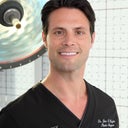Posted underRhinoplasty q&a
Can my nose be deprojected, with dorsal hump removal and bridge narrowing and will I need tip refinement? (Photo)
I had 4 consults and have chose a Dr. to perform rhino in Aug. '16. Every Dr. said that their first priority would be to narrow the wide bridge bones and correct the flat spot in the middle of my bridge; also that my dorsal hump (hooked nose) could be corrected but that my nose wasn't really that overprojected, but that it could be deprojected 1-2mm. Really? When I look at my profile I just get depressed b/c it looks so huge. Can all these problems be fixed and does the tip need refinement?
Answers (11)
From board-certified doctors and trusted medical professionals
More Rhinoplasty Questions
See all Rhinoplasty Q&AWE SEND PRETTY
EMAILS
What’s trending? Who’s turning heads? Which TikTok myths need busting? We’ve got you. No fluff, no gatekeeping—just real talk. Get our free, unfiltered newsletter.





